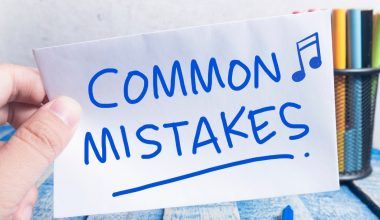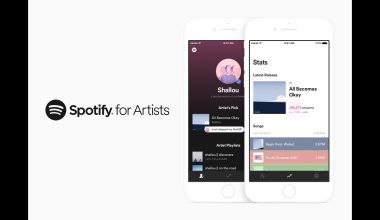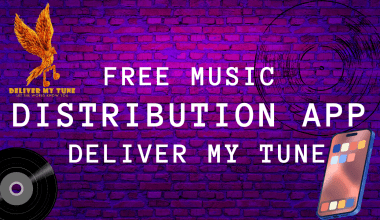If you are thinking about releasing a cover song, it is not as easy as one might imagine. The recording part is a piece of cake, but the distributing part will take some strategic thinking and a mechanical license. Today, you are going to learn everything about distributing a cover song: what it is, what a mechanical license is, how to obtain it, and how to format your metadata before distribution.
What is a Cover Song?
A cover song is when you take someone else’s music, rework it, add your touches, re-record it, and finally redistribute it. A cover can be created for any original song with original compositional elements. For example, it can be an original instrumental song, parodies, or a part of another song’s lyrics.
Benefits of Cover Songs
- Audience Growth: Reach new listeners who are fans of the original song.
- Showcase Talent: Display your unique style and interpretation.
- Engage Fans: Keep your audience engaged with fresh content between original releases.
Where Can I Distribute My Music Without a License?
Legally, you need to obtain a mechanical license before releasing your cover songs commercially and distributing them to all stores and territories.
Legal Distribution Without a License
- Non-Commercial Platforms: Share on platforms like YouTube or SoundCloud with limited monetization.
- Public Domain Works: Distribute covers of songs that are in the public domain without a license.
- Permission from Rights-Holders: Obtain explicit permission for specific, non-commercial uses.
How Can I Obtain a Mechanical License?
The good news is that you can obtain a mechanical license by yourself. You only have to contact the original rights-holder and write up a contract that you both agree upon. If you are creating a cover for a friend’s song, you will need written permission claiming that you can use their song. This contract should outline basic info like how you will use the music, which platforms you will be distributing it on for downloads and streams, and which territories.
Steps to Obtain a Mechanical License
- Identify the Rights-Holder: Determine who owns the rights to the original song.
- Contact the Rights-Holder: Reach out to negotiate terms and obtain permission.
- Draft a Contract: Include usage details, platforms, and distribution territories.
- Use Licensing Agencies: For well-known songs, use agencies like Harry Fox Agency or services like Songfile to streamline the process.
How Do I Format My Cover Song’s Metadata?
Once you have sorted out your mechanical license (if the song is in the public domain you don’t need one), you need to make sure that your metadata is accurate to avoid any publishing delays.
Metadata Essentials
- Credit the Original Artists: Include the original performing artist’s name and the composer’s name in the copyright box.
- Release Information: Fill in details about the release date, label, and genre.
- Artist Info: Ensure accurate information about your band or artist name.
- Track Info: Include track title, duration, and any featuring artists.
- Cover Art: Upload high-quality cover art that meets platform specifications.
Steps for Distributing a Cover Song
Step 1: Obtain a Mechanical License
Before you can start distributing a cover song, securing the necessary licenses is crucial. This includes:
- Mechanical License: Required for reproducing and distributing the cover.
- Sync License: Needed if you plan to use the cover in videos or other multimedia content.
Step 2: Choose Distribution Platforms
Select the digital music stores and streaming platforms where you want to release your cover song. Popular platforms include:
- iTunes and Apple Music
- Spotify
- Amazon Music
- Anghami
- Deezer
Step 3: Format Metadata Correctly
Accurate metadata ensures your cover song is easily discoverable and avoids delays in publishing. Follow the guidelines mentioned earlier to format your metadata.
Step 4: Upload and Distribute
Use a digital music distribution service like Deliver My Tune to upload and distribute your cover song to the selected platforms. Ensure all metadata and licensing information is correctly input during the upload process.
Step 5: Promote Your Cover Song
Once your cover song is live, promote it across your social media channels, website, and through email newsletters. Engage with your audience by sharing behind-the-scenes content, lyric videos, and performance clips.
Latest Trends and Stats of 2024
Music Industry Growth
- Streaming Dominance: Streaming remains the primary mode of music consumption, with platforms like Spotify and Apple Music leading the way.
- Cover Song Popularity: Cover songs continue to be popular, especially on platforms like YouTube where viral covers can gain significant traction.
Licensing and Distribution Updates
- Simplified Licensing: Services like Songfile and Easy Song Licensing have made it easier for independent artists to obtain mechanical licenses.
- Global Reach: Digital distribution services now offer broader reach, enabling artists to distribute their music globally with ease.
Conclusion
Releasing and distributing a cover song involves several important steps, from obtaining the right licenses to formatting metadata accurately. By following this guide, you can ensure a smooth release process and maximize the reach and impact of your cover song. Remember to stay updated with the latest industry trends and leverage digital distribution platforms to share your music with a global audience.
By understanding the intricacies of distributing a cover song, artists can navigate the process more effectively, ensuring their covers reach a wide audience while complying with legal requirements. Use this guide to take your cover song from recording to distribution smoothly and successfully.
For further reading, explore these related articles:
- Importance of ISRC Codes: A Guide to Music Tracking & Distribution
- Understanding the Role of Performance Rights Organizations (PROs) in Apple Music Royalties
- The Role of ISRC Code in Spotify Distribution
For additional resources on music marketing and distribution, visit Deliver My Tune.






